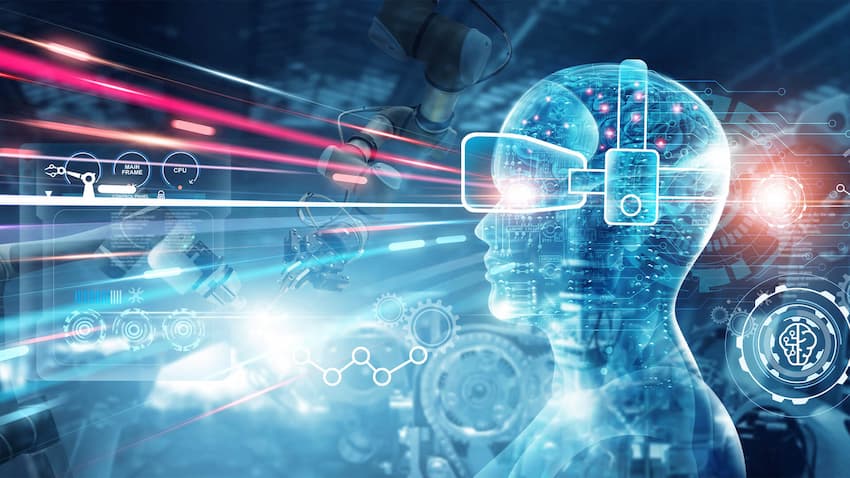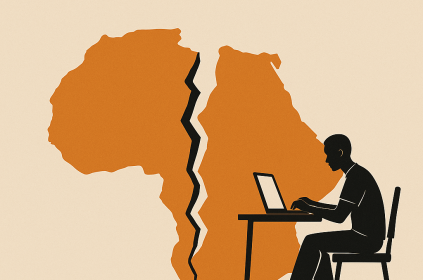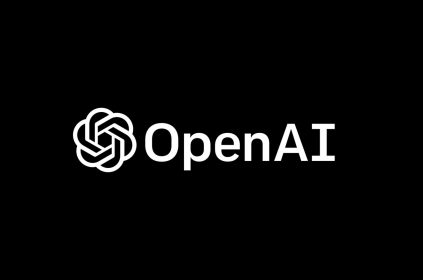You can still catch up with AI conversations around the world. With this report, you would get to know everything you need to know about AI.
Business executives keep talking about it. Teachers are struggling with what to do about it. And artists like Drake seem angry about it.
Love it or hate it, everyone is paying attention to artificial intelligence right now.
Almost overnight, a new crop of AI tools has found its way into products used by billions of people, changing the way we work, shop, create and communicate with each other.
READ ALSO: Is AI Different From The Metaverse? See Intersection
AI advocates tout the technology’s potential to supercharge our productivity, creating a new era of better jobs, better education and better treatments for diseases.
AI skeptics have raised concerns about the technology’s potential to disrupt jobs, mislead people and possibly bring about the end of humanity as we know it.
Confusingly, some execs in Silicon Valley seem to hold both sets of views at once.
What’s clear, however, is that AI is not going away, but it is changing very fast. Here’s everything you need to know to keep up.
What is AI?
In the public consciousness, “artificial intelligence” may conjure up images of murderous machines eager to overtake humans, and capable of doing so.
But in the tech industry, it’s a broad term that refers to different tools that are trained to perform a wide range of complex tasks that might previously have required some input from an actual person.
If you use the internet, then you almost certainly use services that rely on AI to sort data, filter content and make suggestions, among other tasks.
It’s the technology that allows Netflix to recommend movies and that helps remove spam, hate speech and other inappropriate content from your social media feeds.
It helps power everything from autocorrect features and Google Translate to facial recognition services, the last of which uses AI that, in Microsoft’s words, “mimics a human capability to recognize human faces.”
AI can also be successful in developing techniques for solving a wide range of real world problems, such as adjusting traffic signals in real time to manage congestion issues or helping medical professionals analyze images to make a diagnosis.
AI is also central to developing self-driving cars by processing tremendous amounts of visual data so the vehicles can understand their surroundings.
So why is everyone talking about AI now?
The short answer: ChatGPT.
For years, AI has largely operated in the background of services we use every day.
That changed following the November launch of ChatGPT, a viral chatbot that put the power of AI front and center.
People have already used ChatGPT, a tool created by OpenAI, to draft lawsuits, write song lyrics and create research paper abstracts so good they’ve even fooled some scientists.
The tool has even passed standardized exams.
And ChatGPT has sparked an intense competition among tech companies to develop and deploy similar tools.
Microsoft and Google have each introduced features powered by generative AI, the technology underpinning ChatGPT, into their most widely used productivity tools.
Meta, Amazon and Alibaba have said they’re working on generative AI tools, too.
And numerous other businesses also want in on the action.
It’s rare to see a cutting-edge technology become so ubiquitous almost overnight. Now businesses, educators and lawmakers are all racing to adapt.
How exactly does generative AI work?
Generative AI enables tools to create written work, images and even audio in response to prompts from users.
To get those responses, several Big Tech companies have developed their own large language models trained on vast amounts of online data.
The scope and purpose of these data sets can vary.
For example, the version of ChatGPT that went public last year was only trained on data up until 2021 (it’s now more up to date).
These models work through a method called deep learning, which learns patterns and relationships between words, so it can make predictive responses and generate relevant outputs to user prompts.
How is generative AI different from AGI?
As impressive as some generative AI services may seem, they essentially just do pattern matching.
These tools can mimic the writing of others or make predictions about what words might be relevant in their responses based on all the data they’ve previously been trained on.
AGI, on the other hand, promises something more ambitious — and scary.
AGI — short for artificial general intelligence — refers to technology that can perform intelligent tasks such as learning, reasoning and adapting to new situations in the way that humans do.
OpenAI CEO Sam Altman has teased the possibility of a superintelligent AGI that could go on to change the world or perhaps backfire and end humanity.
For the moment, however, AGI remains purely a hypothetical, so don’t worry too much about it.
How much of the AI gold rush is just hype?
Anytime there’s an excess of buzz around a technology, it’s good to be skeptical — and there is certainly a lot of that here.
Investor fascination with AI has helped push Wall Street back into a bull market, despite lingering economic uncertainty.
Not all AI tools are equally useful and many companies will certainly tout AI features and strategies simply to tap into the current hype cycle.
But even in just the past six months, AI has already shown potential to change how people do numerous everyday tasks.
One of the biggest selling points around AI chatbots, for example, is their ability to make people more productive.
Earlier this year, some real estate agents said that ChatGPT saved them hours of work not only by writing listings for homes for sale but also looking up the permitted uses for certain land and calculating what mortgage payments or the return on investment might be for a client, which typically involve formulas and mortgage calculators.
Artificial intelligence is also much broader than ChatGPT and other generative AI tools.
Even if you think AI chatbots are annoying or might be a fad, the underlying technology will continue to power meaningful advances in products and services for years to come.
Will it steal my job?
The fear is AI will eliminate millions of jobs. The hope is it will help improve how millions do their jobs. The current reality is somewhere in between.
Companies will likely need new workers to help them implement and manage AI tools.
Employment of data analysts and scientists, machine learning specialists and cybersecurity experts is forecast to grow 30% on average by 2027, according to one recent estimate from the World Economic Forum.
But the proliferation of AI will also likely put many roles at risk eventually.
There could be 26 million fewer record-keeping and administrative jobs by 2027, the WEF predicted.
Data entry clerks and executive secretaries are expected to see the steepest losses.
For now, there are clearly limits to how well AI can do the job of a human on its own.
When CNET, a media outlet, experimented with using AI to write articles, it came under scrutiny for publishing pieces with factual errors.
Likewise, a lawyer in May made headlines for citing false court cases to a judge provided to him by ChatGPT.
In an affidavit, the lawyer said he had never used ChatGPT as a legal research tool before and “was unaware of the possibility that its content could be false.”
Is AI dangerous?
Top AI executives have warned that AI could potentially bring about human extinction. But these same executives are also racing to deploy the technology into their products.
Some experts say that focusing on far-off doomsday scenarios may distract from the more immediate harms that AI can cause, such as spreading misinformation, perpetuating biases that exist in training data, and enabling discrimination.
For example, generative AI could be used to create deepfakes to spread propaganda during an election or enable a frightening new era of scams.
Some AI models have also been criticized for what the industry calls “hallucinations,” or making up information.
Even before the rise of ChatGPT, there were concerns about AI acting as a gatekeeper that can determine who does and does not move forward in a hiring process, for example.
AI-powered facial recognition systems have also resulted in some wrongful arrests, and research has shown these systems are drastically more prone to error when trying to match the faces of darker skinned people.
The more AI tools are incorporated into core parts of society, the more potential there is for unintended consequences.
Where does AI go from here?
Regulators in the United States and Europe are pushing for legislation to help put guardrails in place for AI, which could ultimately impact how the technology develops. But it’s unclear if lawmakers can keep pace with the rapid advances in AI.
Experts believe in the months ahead, generative AI will go on to create even more realistic images, videos, and audio that could further disrupt media, entertainment, tech and other industries. The technology will likely become increasingly conversational and personalized.
In March, OpenAI unveiled GPT-4, the next-generation version of the technology that powers ChatGPT.
According to the company and early tests, GPT-4 is able to provide more detailed and accurate written responses, pass academic tests with high marks and build a working website from a hand-drawn sketch. (Altman has previously said OpenAI is not yet training GPT-5.)
AI will almost certainly be infused into many more products and services in the coming months.
That means we’ll all have to learn how to live with it.
As ChatGPT put it in response to a prompt from CNN, “AI has the potential to transform our lives … but it’s crucial for companies and individuals to be mindful of the accompanying risks and responsibly address concerns.”
Culled from CNN..



















 and then
and then